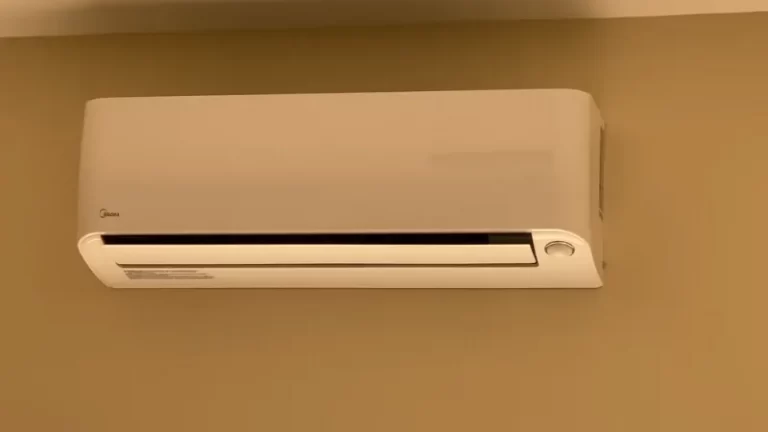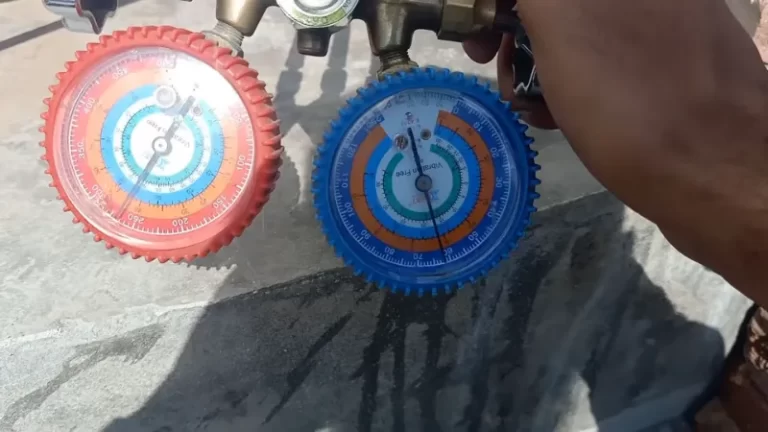Amana vs Trane Furnace: The 2025 Breakdown You Can’t Ignore
Choosing a new furnace is a major financial decision fraught with complexity. You are not just buying an appliance; you are investing in your home’s comfort and safety for the next 15 to 20 years. This decision becomes even more daunting when faced with two industry titans: Amana and Trane.
Many homeowners find themselves paralyzed, trying to decipher technical jargon and conflicting reviews. The core problem is cutting through the marketing noise to understand which brand truly offers the best value, reliability, and long-term peace of mind for their specific needs.
This comprehensive guide will break down the Amana vs. Trane furnace debate. We will explore their core technologies, real-world performance, cost implications, and the one factor that matters more than the name on the unit itself.
You'll Learn About
Who is Behind the Brands? Unmasking Amana and Trane
Understanding the corporate structure behind these names provides crucial context. It reveals the engineering philosophies and manufacturing scale that influence the products you are considering. These are not just brand names, but legacies of innovation and market strategy.
Amana, a brand with deep roots in American appliances, is now part of the Daikin Industries family, the world’s largest HVAC manufacturer. This places Amana as the premium sister brand to Goodman, leveraging massive global resources while often being associated with Goodman’s reputation for value and accessibility. Trane, on the other hand, operates under the umbrella of Trane Technologies (formerly Ingersoll Rand), a company renowned for its commercial and industrial-grade engineering, a philosophy that heavily influences its residential products.
Core Technology Showdown: What Really Matters Inside
The real difference between these two brands lies deep within the sheet metal casing. The design and materials of their most critical components directly impact efficiency, longevity, and the overall comfort of your home. It is here that engineering philosophies diverge most sharply.
The Heart of the Furnace: Heat Exchanger Battle
The heat exchanger is arguably the most critical and expensive component in a gas furnace. Its job is to safely transfer heat from combustion gases to the air that circulates through your home. Its failure can lead to dangerous carbon monoxide leaks, making its design and durability paramount.
Amana has built its reputation on its patented tubular heat exchanger made from stainless steel. Stainless steel offers superior resistance to rust and corrosion compared to traditional aluminized steel. Furthermore, the tubular, wrinkle-bend design is engineered to expand and contract with temperature changes more effectively, reducing mechanical stress and the risk of cracks over time.
Trane primarily uses an aluminized steel heat exchanger, often in a clamshell or welded design. While aluminized steel is the industry standard and highly effective, it is inherently more susceptible to corrosion over the long term. However, Trane’s reputation is built on rigorous testing and engineering to ensure their heat exchangers are robust and reliable, a claim supported by decades of field performance.
Compressor and Blower Motor Technology
While compressors are central to air conditioners and heat pumps, the blower motor is the furnace’s engine for air circulation. Both brands offer a range of motor options that significantly affect comfort and electrical consumption. Variable-speed blower motors, available in higher-end models from both Amana and Trane, are a game-changer.
These motors can adjust their speed based on heating demand, running at lower, quieter speeds for longer periods. This provides more consistent temperatures, better humidity control, and improved indoor air quality through more constant filtration. In contrast, standard single-stage furnaces operate on a simple “full-blast-on” or “off” cycle, leading to noticeable temperature swings.
Performance & Efficiency (AFUE): Decoding the Numbers
A furnace’s efficiency is measured by its Annual Fuel Utilization Efficiency (AFUE) rating. This percentage tells you how much of the fuel you purchase is converted directly into heat for your home. For example, a 96% AFUE furnace converts 96 cents of every dollar spent on fuel into usable heat, with the remaining 4% lost through exhaust.
Both Amana and Trane offer a full spectrum of furnaces, from the federally mandated minimum efficiency models (typically 80% AFUE) to ultra-high-efficiency condensing furnaces with ratings exceeding 98%. An 80% AFUE furnace is non-condensing, meaning hotter exhaust gases are vented out. High-efficiency furnaces (90%+) have a second heat exchanger to extract more heat from the exhaust, resulting in a cool, acidic condensate that must be drained, but also in significant fuel savings.
Choosing the right AFUE rating often depends on your climate. In colder regions with long heating seasons, the extra upfront cost of a high-efficiency model is quickly recovered through lower utility bills.
| Feature | Amana | Trane |
|---|---|---|
| Primary Heat Exchanger | Stainless Steel (Tubular Design) | Aluminized Steel |
| Typical AFUE Range | 80% – 98% | 80% – 97.3% |
| Blower Motor Options | Multi-Speed, Variable-Speed | Multi-Speed, Variable-Speed |
| Communicating Technology | ComfortBridge™ Technology | ComfortLink™ II |
| Top-Tier Compressor Warranty | Lifetime Unit Replacement Limited Warranty* | 10-12 Year Limited Warranty* |
| Standard Parts Warranty | 10-Year Limited Warranty* | 10-Year Limited Warranty* |
*Warranties are subject to timely registration and other conditions. Always read the full warranty documentation.
The Price Tag: Amana vs. Trane Furnace Cost Analysis
When budgeting for a new furnace, it is crucial to look at the total installed cost, not just the price of the unit itself. Trane has cultivated a premium brand image and its furnaces typically come with a higher upfront price tag. This cost reflects their extensive research, development, and marketing as “America’s Most Trusted HVAC Brand.”
Amana, while being the premium line of Goodman/Daikin, is generally positioned as a more value-oriented choice compared to Trane. Homeowners often find they can get an Amana furnace with comparable features (like a variable-speed motor or high AFUE rating) for a lower initial investment. However, pricing can vary significantly based on your location, the complexity of the installation, and the specific contractor you choose.
A successful installation might also highlight other necessary home repairs. For instance, accessing furnace lines might require removing old fixtures, and it helps to know how to remove glued wood from the wall without causing damage. These small but related tasks can add to the overall project scope.
Warranty Wars: Who Offers True Peace of Mind?
This is where Amana truly distinguishes itself from the competition. For their higher-end models, Amana offers an exceptional Lifetime Unit Replacement Limited Warranty for the compressor and heat exchanger. If the heat exchanger fails for the original, registered homeowner, Amana will provide a completely new furnace. This is one of the most robust warranties in the entire industry.

Trane offers a very solid, industry-standard warranty. This typically includes a 10-year limited warranty on parts and a 20-year or lifetime limited warranty on the heat exchanger. While reliable, it does not match Amana’s offer of replacing the entire unit.
Crucially, these best-in-class warranties are contingent upon online registration within a specific timeframe (usually 60 days). Failure to register often results in the warranty reverting to a much shorter, base-level coverage. Always confirm that your installer has registered your product or that you have done so yourself.
The Deciding Factor Most Homeowners Overlook
After comparing technology, price, and warranties, the single most important factor in your furnace’s performance and lifespan is the quality of the installation. A top-of-the-line Trane furnace installed incorrectly will be less efficient and more prone to failure than a mid-tier Amana installed by a meticulous, highly-trained professional.
A proper installation involves much more than just connecting gas and electrical lines. It includes a detailed load calculation to ensure the furnace is sized correctly for your home, proper ductwork assessment and sealing, and precise calibration of the gas pressure and airflow. An oversized furnace will short-cycle, wasting energy and causing excessive wear, while an undersized unit will struggle to keep your home warm.
When getting quotes, do not just compare prices. Ask potential contractors about their training, certifications (like NATE), and the specific procedures they follow during installation. A cheaper quote from a less reputable installer can cost you far more in the long run through inefficiency and premature repairs.
Real Homeowner Feedback: What Do Reddit and Forums Say?
Online forums are a valuable resource for unfiltered consumer opinions. A common theme is praise for Trane’s perceived reliability and quiet operation. Many Trane owners express a “buy it and forget it” mentality. The primary complaint against Trane is its high initial cost and the proprietary nature of some of its parts, which can make repairs more expensive down the line.
Amana users frequently celebrate the unbeatable warranty, citing it as the ultimate peace of mind. The conversation often links Amana to Goodman, with some viewing it as a rebranded, higher-spec Goodman unit. This brand association is similar to what is seen in other HVAC comparisons, such as the debate around RunTru by Trane vs Goodman, where a value brand’s performance is weighed against its premium parent company.
The Verdict: Which Furnace is Right for Your Home?
The choice between Amana and Trane is not about picking a “winner” but about aligning the brand’s strengths with your personal priorities. The right decision depends on your budget, how long you plan to stay in your home, and your tolerance for risk.
Choose Amana if…
You are a value-conscious homeowner who prioritizes long-term protection. If the idea of a potential furnace replacement being covered decades from now is highly appealing, Amana’s lifetime warranty is unmatched. You should choose Amana if you want premium features without the premium price tag and have found a well-reviewed local dealer who specializes in Amana or Goodman products.
Choose Trane if…
You prioritize brand reputation and proven, long-term reliability above all else. If you are willing to invest more upfront for what is widely considered to be robust engineering and a quiet, dependable system, Trane is an excellent choice. You should choose Trane if you prefer a vast network of certified dealers and believe in the adage, “It’s hard to stop a Trane.”
Beyond the Furnace: Holistic Home Comfort
Remember that your furnace is part of a larger system. Achieving true home comfort requires a holistic approach. Ensuring your home is well-insulated and air-sealed is just as important as the furnace’s AFUE rating.
Attention to detail throughout your home makes a difference. For example, preventing drafts is key to efficiency, which can mean learning how to fix frayed carpet in a doorway to seal a common air leak. A high-efficiency furnace can’t overcome significant energy loss from a poorly maintained home envelope.
Final Recommendations
Your final decision should be made after getting at least three detailed quotes from reputable, local HVAC contractors. Have each contractor assess your home and recommend specific models from both Amana and Trane, if they carry them. Ask them why they recommend a particular unit over another.
Ultimately, the best brand is the one installed by the best contractor. A great installer will guide you to the right choice for your home and budget, ensuring that your significant investment provides reliable, efficient comfort for many years to come.



![Polarity Reversed on Furnace [Symptoms, Causes, Fixes]](https://fixitinthehome.com/wp-content/uploads/2023/02/Polarity-Reversed-on-Furnace-768x432.webp)